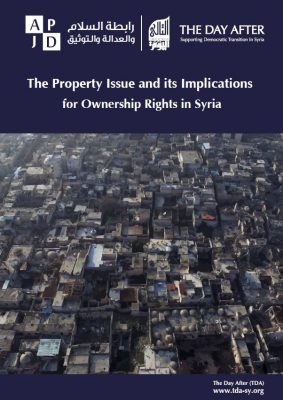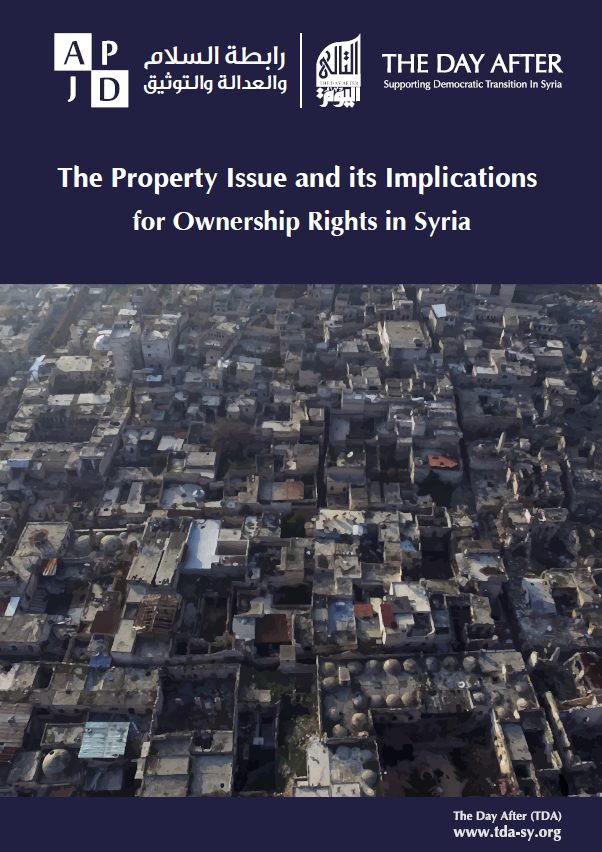
Publication date: June 2019
Law No. 10 of 2018 sparked Syrians’ fears over their rights regarding homes, land and property. The law was issued at a time when most of Syria’s metropolises had suffered extensive destruction and nearly half the country’s population were either refugees or displaced. Large areas of land had fallen outside the regime’s control, local governing frameworks had been created, real estate records exposed to fire and damage, and as a result many Syrians lost their property deeds. Moreover, this law was issued ignoring decades-long inheritances and violations of housing and property rights in Syria, in the absence of constitutional protection of these rights and a succession of unfair laws, as well as administrative and legal dysfunction in registration and protection of property.
These circumstances make this law a real threat to property rights; therefore, it is necessary to clarify the background that led to its issuance; to identify the challenges of haphazard housing structures, common property, lack of allocation of land intended for construction; and to review real estate legislation and its impact on private possession, the right to ownership under the Syrian constitution, and legislative floundering in Syria, especially when related to property ownership.
Therefore, this report presents a comprehensive understanding of the real estate problem, in particular Law No. 10, to identify its reasons, risks of its application, and its relationship to the property problem in Syria; and to explain its provisions and shortcomings, and ways to overcome its repercussions.
It is also important to clarify the impact of real estate legislation, especially that issued after the conflict broke out, on the return of refugees and displaced persons; the challenges Syria will face in the period following a political agreement and the impact of such an agreement on the creation of a safe and neutral environment; the compatibility of this legislation with international covenants and conventions, and solutions available to a new Syria to address the effects of legislation violating Syrians’ rights; and to ensure their access to ownership rights.
